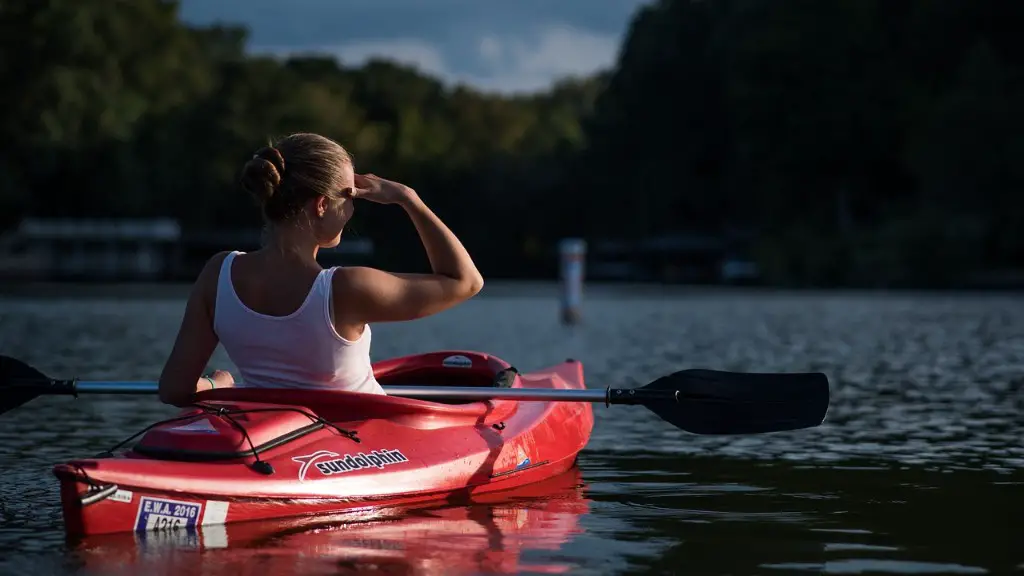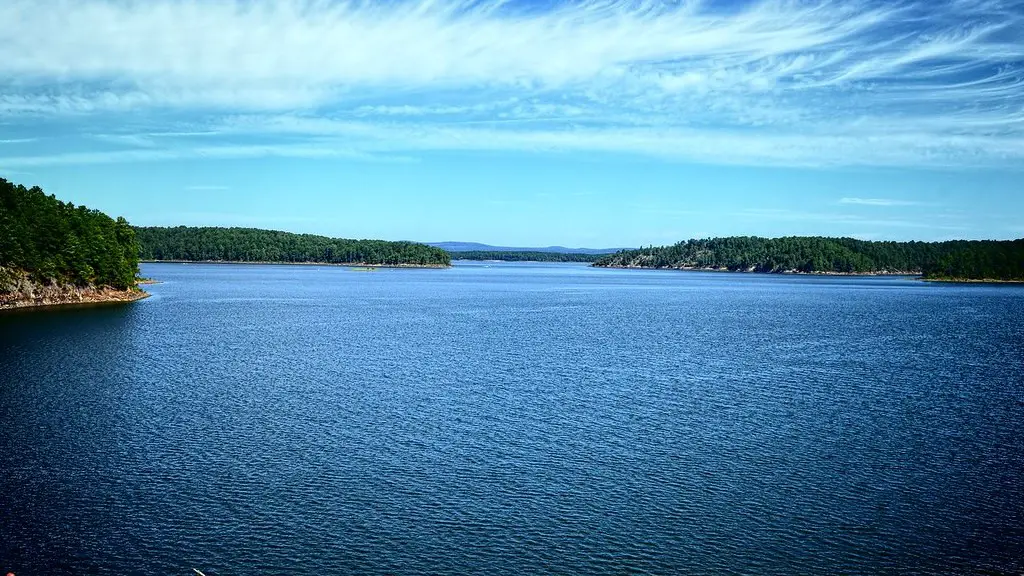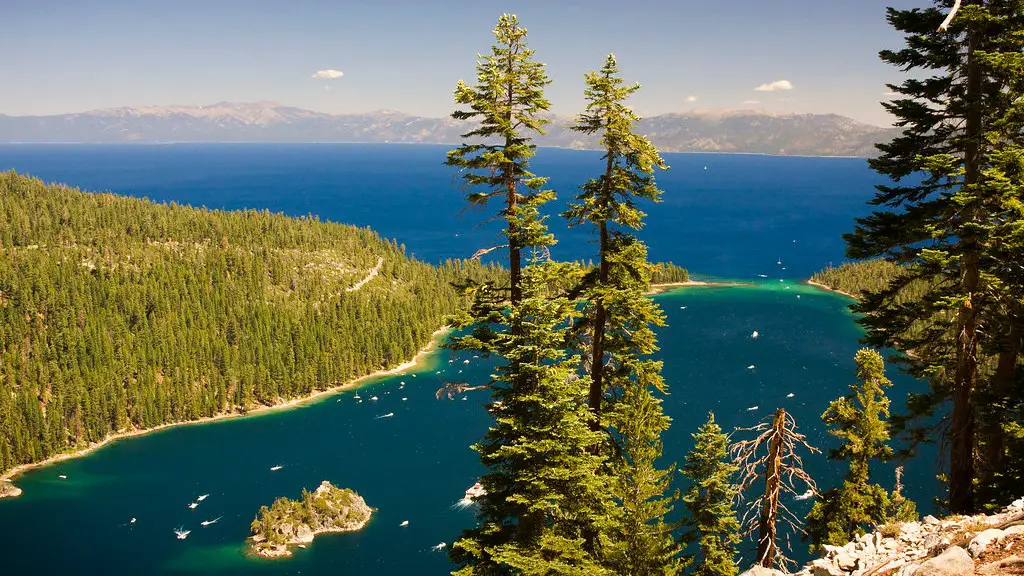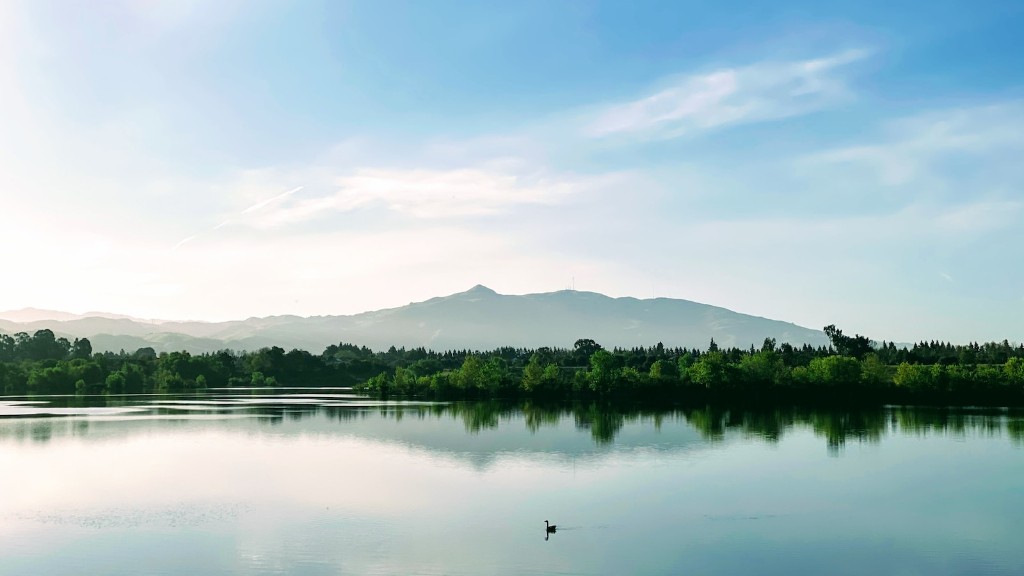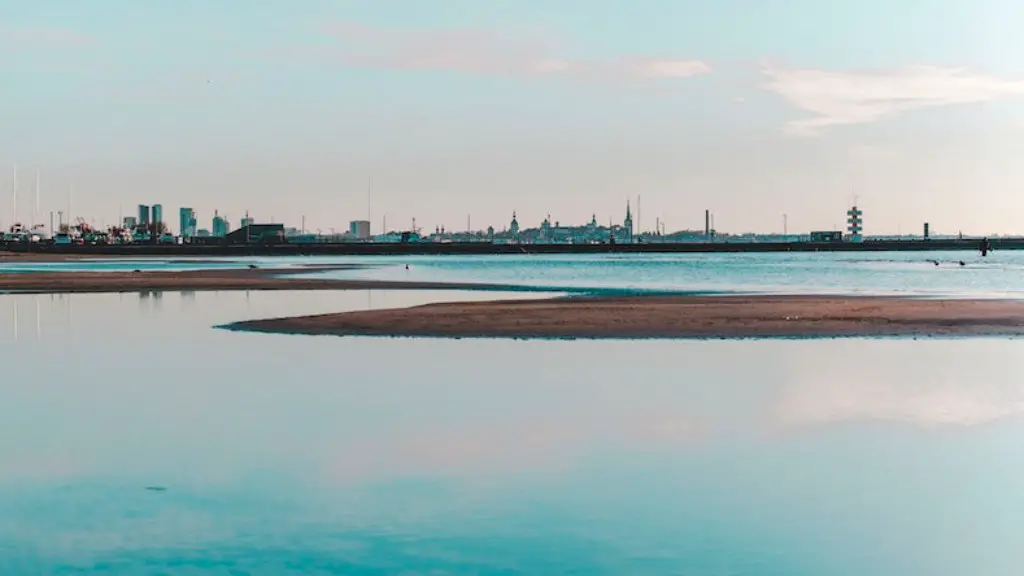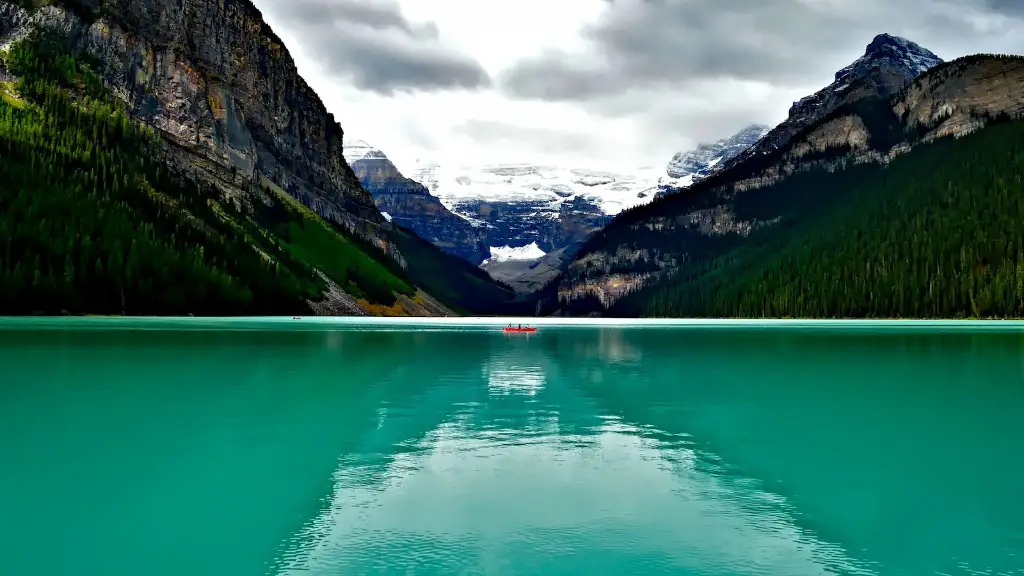Lake Baikal in Russia is the oldest and deepest lake in the world, not just in Russia. With its 25 million years of age, it’s one of the oldest places on Earth – and with its maximum depth of 1,642 meters (5,387 feet), it’s also one of the deepest. Located in the Southeast of Siberia, it’s set in the rift valley of the lower Angara River. It covers 31,722 square kilometers (12,249 square miles) and is the largest freshwater lake by volume in the world, containing 23,000 cubic kilometers (5,521 cubic miles). It’s also among the clearest in the world, allowing for breathtaking views of the lakebed from over 40 meters (131 feet) below.
The lake is home to a variety of different wildlife, and 20% of these species are unique to Lake Baikal. This includes the world’s only freshwater seal, the nerpa, as well as many endangered species like the Baikal sturgeon, the world’s largest sturgeon, and the Baikal omul, an endemic fish species. The lake is home to many plants, many of which are critically endangered, and there is also a wide variety of birds, mostly migratory. In addition to the wildlife, Lake Baikal also serves as an important cultural and historical landmark, as it was the site of many battles during the Mongol invasion of Russia and later during the Russian Civil War.
The age of Lake Baikal has been the subject of much debate over the years, with estimates ranging from 25 to 40 million years. The most widely accepted age is now between 25 and 30 million years, with some even suggest that it may be even older. The United Nations Educational, Scientific and Cultural Organization (UNESCO) has declared it a World Heritage site, describing it as “the oldest, deepest, and most diverse of all freshwater lakes”.
Lake Baikal’s age is an important factor in understanding the ecosystem of the lake. The lake’s remarkable biodiversity and clear waters are believed to be due to its long history and unique environment. The lake is also home to a plethora of unique micro organisms, including bacteria, viruses and fish genotypes, which have adapted to survive in its extreme conditions. This ecosystem has been the subject of much research, and it’s thought to be centuries ahead of its time in terms of evolution — evidence that suggest that Lake Baikal may even predate the formation of the landmass on which it sits.
The lake’s age also makes it an important part of Russian culture and heritage. Many of Lake Baikal’s shoreline settlements were once occupied by the ancestors of today’s Buryats, a Mongol people that have lived on Lake Baikal’s shores for centuries and hold the lake as sacred. Today, they consider it to be the home of their ancestors and revere it as a sacred place.
Lake Baikal’s age and biodiversity also make it a popular tourist destination. Every year, thousands of visitors come to see the lake firsthand and explore its unique ecology. The lake’s wide array of species and its diverse environment offer interesting opportunities for scientific research, making it a favorite among experienced naturalists and biologists. It is also a popular spot for fishing and boating, and for those looking to explore its depths, it’s possible to do so using special floatation devices.
Environmental impact of Lake Baikal
Lake Baikal is a fragile ecosystem, and various activities have been observed to have a detrimental impact on its environment. The biggest threat to Lake Baikal comes from human activities such as industrial development in the region, pollution and over-exploitation of the lake’s resources. In the last few decades, increased use of natural resources has led to a decrease in the water level, increased pollution of the lake and a decrease in the biodiversity of the lake. All of this has threatened Lake Baikal and made it of conservation concern.
Industrial development in the region has also had a large impact on the lake’s water quality. Pollutants from mining, agriculture and other activities have seeped into the lake, leading to degraded water quality. Pollutants such as heavy metals and nitrates have been found in high concentrations in the lake and have been found to have adverse effects on wildlife and human health.
In addition, overfishing in the region has resulted in a decrease in the fish population in the lake. Overfishing depletes the stock of fish in the lake and reduces biodiversity. This has a knock-on effect, as a decrease in biodiversity affects the stability of the food chain and can lead to other ecological impacts.
The good news is that the Russian government has taken steps to address the problem, including establishing a number of nature reserves to protect Lake Baikal and its unique ecosystems. In addition, research institutions and environmental organizations are doing their part to protect and preserve the lake’s environment. There are also various initiatives, such as the Baikal Wave project, which aim to reduce human pressure on the lake and improve water quality.
Impact of tourism on the enviroment
Though Lake Baikal is a popular tourist destination, the influx of visitors can have an impact on the local environment. Tourism activities such as boating, fishing and hiking can contribute to pollution in the lake and can also increase the pressure on the local wildlife and habitats. Additionally, many visitors arrive without following the principles of ecotourism and can have a negative impact on local ecosystems and habitats.
To reduce their environmental impact, visitors should adhere to principles of ecotourism, such as minimizing the amount of litter left behind and educating themselves on the local environment and culture before they visit. It’s also important that visitors remain on designated trails and use designated restrooms, as this will help to keep the area pristine. By following these guidelines and practicing responsible tourism, visitors to Lake Baikal can help preserve the area’s environment and ensure its protection for future generations.
Conclusion
Lake Baikal in Russia is one of the oldest and deepest lakes in the world, and it’s home to a wide variety of unique wildlife. This ancient lake is around 25 to 30 million years old, and it continues to serve as a vital source of biodiversity and cultural heritage for generations. A number of activities, such as industrial development and over exploitation of resources, have had a detrimental effect on Lake Baikal’s environment, and the influx of visitors can also have a negative impact. Fortunately, the Russian government is taking steps to protect the lake, and people visiting the area are encouraged to adhere to principles of ecotourism to preserve the lake and its environment.
Conservation efforts
Conservation of Lake Baikal is of paramount importance, and it’s something that is taken seriously by the Russian government and other organisations. Numerous initiatives have been established to help protect the lake and its surroundings.
The World Wildlife Fund (WWF) has set up a number of projects in the region, including a program to protect the Baikal seals. The organization has also launched initiatives to clean up the lake and reduce pollution in the region.
In addition, a number of scientific research projects are also underway in Lake Baikal. These projects aim to better understand the unique ecosystem of the lake and how it’s affected by environmental changes.
Furthermore, local communities in the area are also involved in conservation efforts. Local people are working to preserve the lake’s unique biodiversity and promote sustainable development in the region.
The local tourism industry
The local tourism industry has also been helping to protect Lake Baikal’s environment. Tourists are encouraged to engage in responsible tourism, such as using designated trails and avoiding leaving any litter behind.
The local tourism industry has also been helping to promote ecological awareness amongst visitors. Many local tour operators offer educational tours and talks about the lake’s environment, and some even offer hands-on activities that help teach visitors about conservation and sustainable living.
The tourism industry has also been an important source of income for local communities in the area. This income has helped to fund conservation efforts in the region and has provided much-needed jobs and business opportunities.
The future of Lake Baikal
Lake Baikal is an important natural heritage site, and its conservation is paramount. The lake is currently protected by a number of initiatives, as well as the commitment of the local communities and the tourism industry. However, it’s important to ensure that progress is made in protecting the lake’s environment and preserving its unique biodiversity.
It’s also essential to continue working to reduce the environmental impact of human activities in the region. This can be achieved by ensuring that all industrial and tourism activities are conducted in a responsible and sustainable manner. Additionally, research and monitoring of the lake’s environment should be a priority.
By taking these measures, we can ensure that Lake Baikal remains an important source of biodiversity and cultural heritage for future generations.
